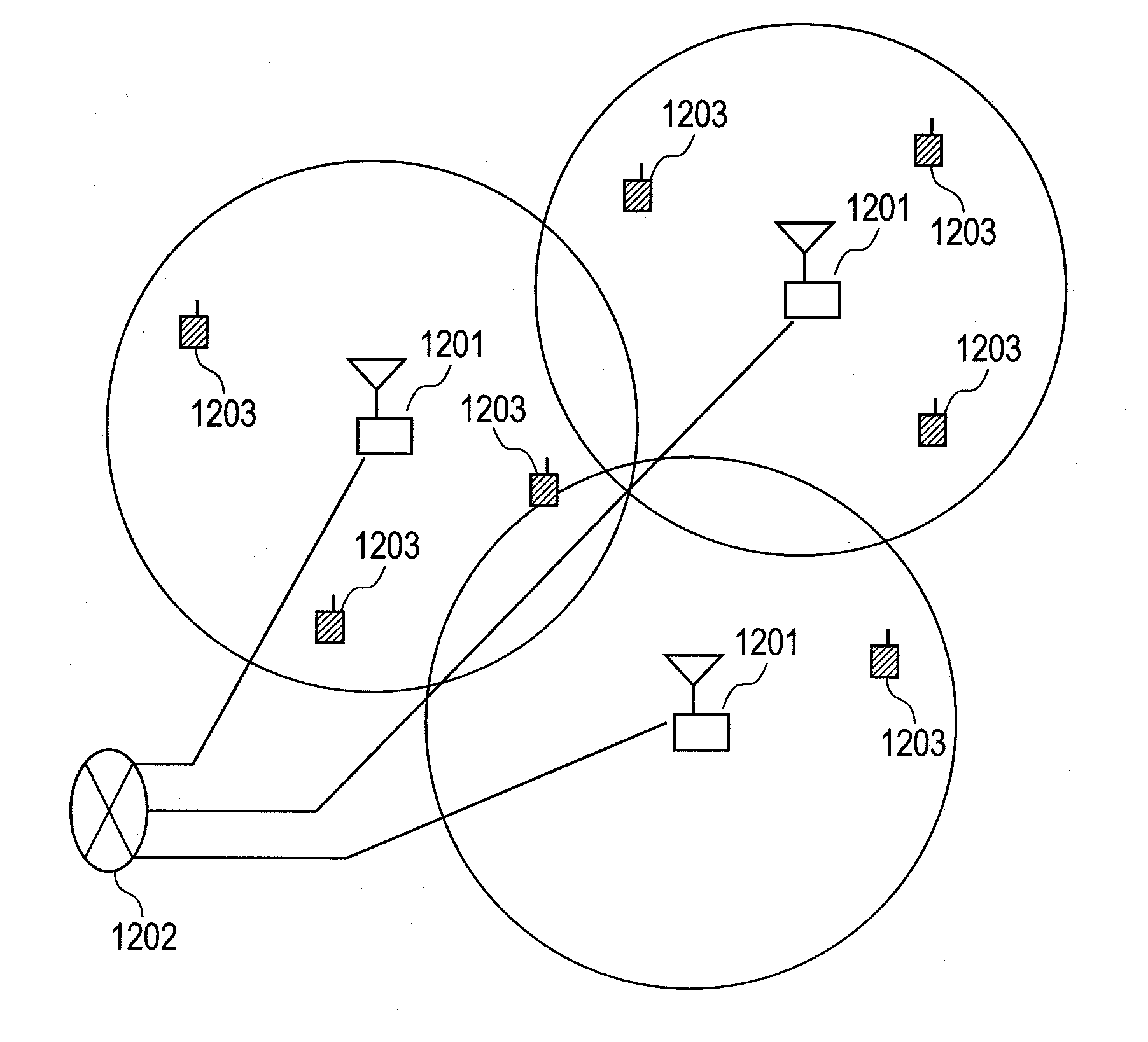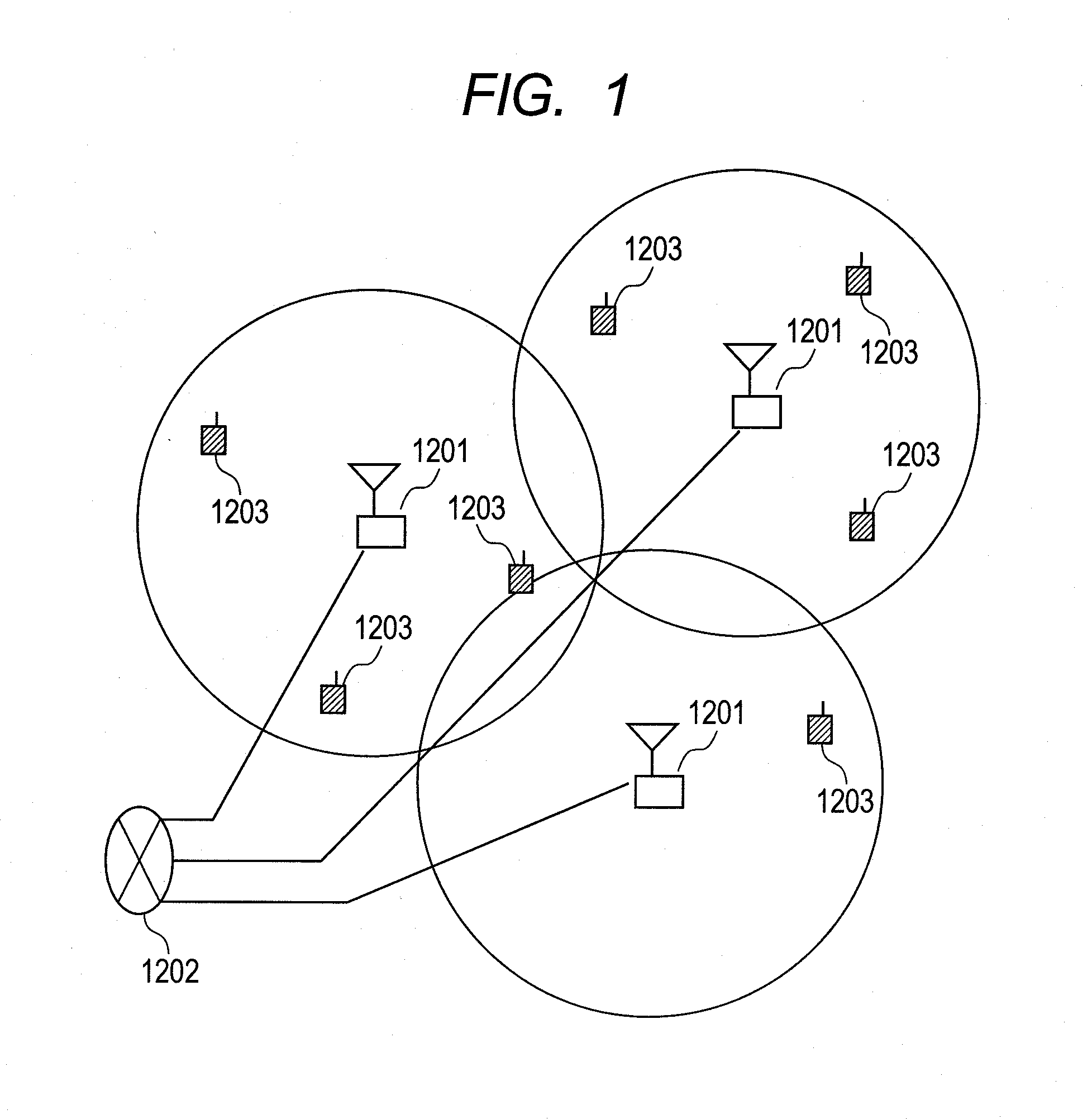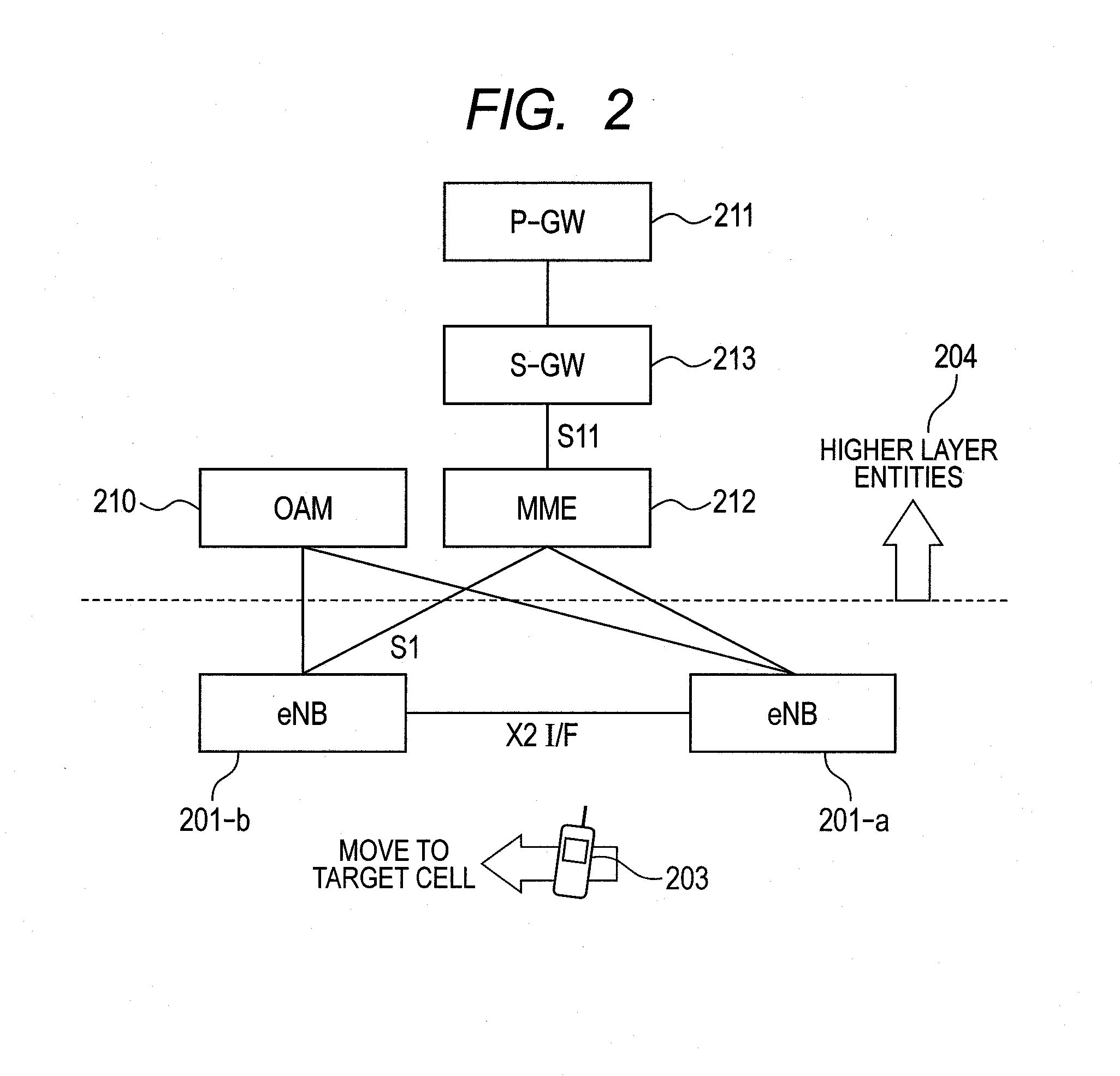Mobility control method mitigating inter cell interference and base stations which adopt the method
a technology of inter-cell interference and control method, which is applied in the direction of electrical equipment, wireless communication services, wireless commuication services, etc., can solve the problems that the terminal in the base station using only cells with a large radius, such as macro cells, will be difficult in view of the load of the base station, and achieve the effects of reducing radio wave interferen
- Summary
- Abstract
- Description
- Claims
- Application Information
AI Technical Summary
Benefits of technology
Problems solved by technology
Method used
Image
Examples
first embodiment
Specific examples of the E-UTRAN entity structure are shown in FIG. 2 and FIG. 3. FIG. 2 is a block diagram showing device connections relating to handovers among base stations monitored by a single MME (Mobile Management Entity) 212. FIG. 3 is a block diagram showing device connections relating to handovers among base stations by way of different MME.
Handovers made by the E-UTRAN can be broadly grouped into two types. In both cases the procedures for establishing the bearer connection are different but the processing between the terminal (UE) 203 and the base station 201-a is approximately the same.
The higher layer entity 204 utilized in the following description is a section or a collective name for the OAM (Operation And Maintenance) device 210, MME212, S-GW (Serving-GateWay), P-GW (Packet Data Network-GateWay). The OAM device 210 includes a base station control device (EMS: Element Management System).
FIG. 25 is a diagram showing the structure of the wireless communication system...
second embodiment
The second embodiment is described next while referring to the sequence drawing shown in FIG. 19. The point where this embodiment differs from the first embodiment is that no interface is needed to directly exchange information between base stations but in all other points the embodiments are identical. This embodiment will for example likely prove applicable to femtocell base stations. Femtocell base stations are applicable because they can be connected to back haul lines provided to Internet Service Providers (ISP).
The following step 2102-b here replaces the process implemented in step 2102. In step 2102-b, the higher layer entity 204 serves as an intermediary to report interference information and load information that was reported by the inter-base station interface (such as the X2 interface for E-UTRAN). The upstream device 204 may for example report by way of an interface called the S1 interface in E-UTRAN that couples the base station and MME.
The higher layer entity 204 may a...
third embodiment
FIG. 20 is a drawing showing the handover sequence in the third embodiment. Among the process flows shown in FIG. 8 described in the first embodiment, the processing in step 2101 may be implemented as shown next. The terminal 203 may be set to report acquisition of cell size information from neighbor cells via the neighbor cell ID rather than via the upstream device 204 (step 2101-a). The type of neighbor cell can be identified from the reported cell ID by dividing up the range in which cell ID are allocated among femtocell and macrocell base stations. All other processing is the same as the first embodiment.
The hardware structure is implemented by the base station shown in FIG. 7, and the base station control device shown in FIG. 6.
PUM
 Login to View More
Login to View More Abstract
Description
Claims
Application Information
 Login to View More
Login to View More - R&D
- Intellectual Property
- Life Sciences
- Materials
- Tech Scout
- Unparalleled Data Quality
- Higher Quality Content
- 60% Fewer Hallucinations
Browse by: Latest US Patents, China's latest patents, Technical Efficacy Thesaurus, Application Domain, Technology Topic, Popular Technical Reports.
© 2025 PatSnap. All rights reserved.Legal|Privacy policy|Modern Slavery Act Transparency Statement|Sitemap|About US| Contact US: help@patsnap.com



